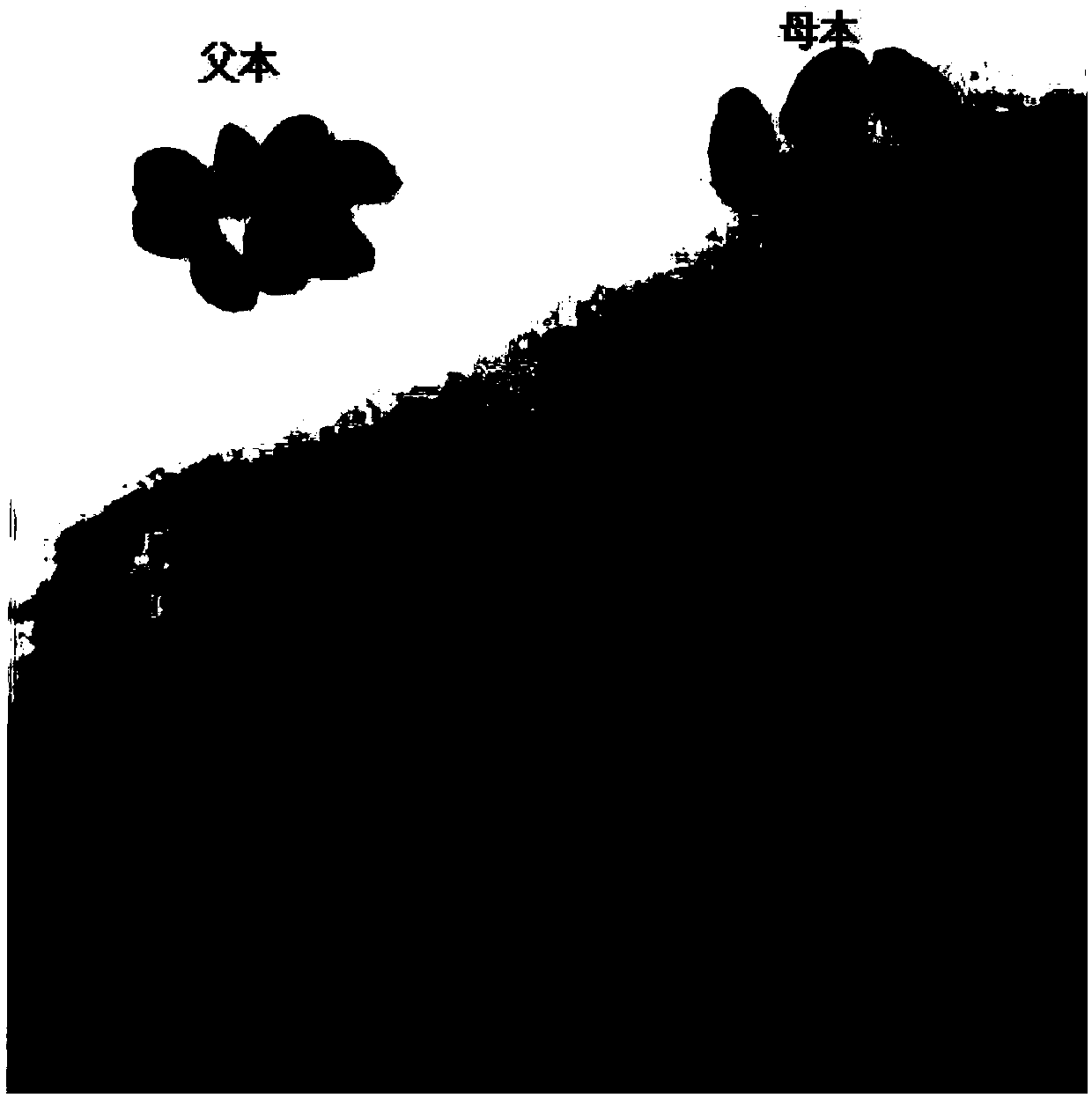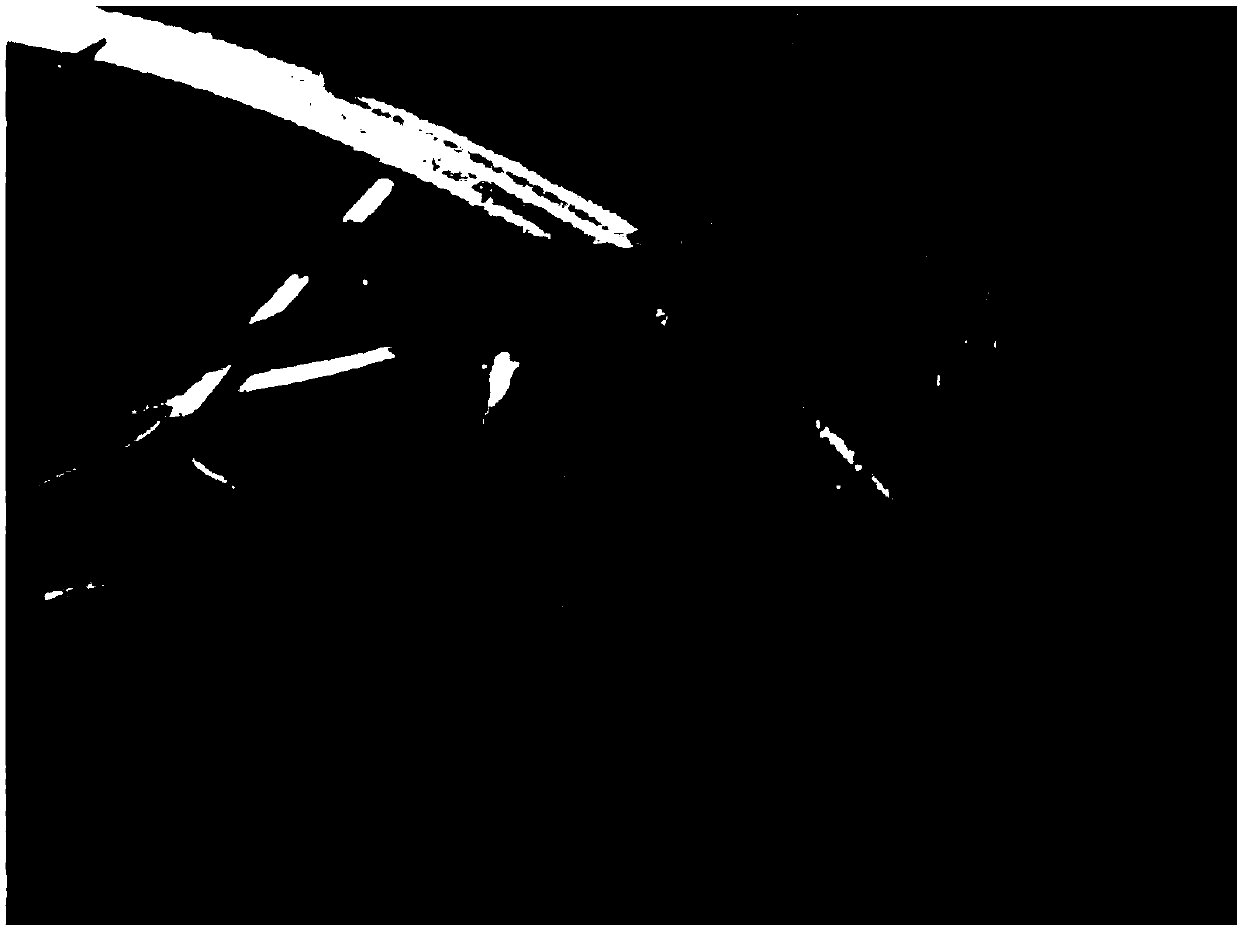Breeding method of watermelon rootstock
A watermelon and rootstock technology, applied to the field of watermelon rootstock selection, can solve the problems of restricting wild watermelon rootstock selection, distant watermelon kinship, watermelon quality decline, etc., and achieves the effects of protecting parents, strong affinity, and stable variety traits.
- Summary
- Abstract
- Description
- Claims
- Application Information
AI Technical Summary
Problems solved by technology
Method used
Image
Examples
Embodiment 1
[0025] In 2012, seven internationally renowned medicinal watermelon materials originating in Algeria and other countries were introduced from the United States (Table 1). In 2014, a preliminary hybridization experiment was carried out with Zigua Y20, a disease-resistant offspring of the well-known Chinese variety 'Daoxian Red Seed Melon'. The medicinal watermelon was used as the male parent, and the seed melon was used as the female parent. Each material was pollinated 50 times. After completion, the number of fruit set was counted to calculate the hybrid compatibility. The hybridization affinity calculation method is as follows:
[0026] Hybrid compatibility = number of fruit set / number of cross pollination * 100%
[0027] At the same time, the offspring were continuously selfed, and the selfing affinity of the offspring was calculated.
[0028] Self-compatibility = number of fruit set / number of self-pollination * 100%
[0029] The results show that, for example, three ...
Embodiment 2
[0037] Rootstock grafting test:
[0038] The scion uses the famous watermelon variety 'Hong 1' in my country, and white-seeded pumpkin and Yaozhen No. 1 are used as rootstocks respectively. 100 plants are grafted for each treatment, and repeated 3 times. The survival rate was counted 15 days after grafting.
[0039] The results are shown in Table 3. Yaozhen No. 1 has a good grafting affinity with ordinary watermelons, and the grafting survival rate of the three treatments is above 99%. There is no significant difference in plant growth compared with white-seeded pumpkin grafted rootstocks.
[0040] Table 3 Comparison experiment of grafting white-seed pumpkin and Yaozhen No. 1
[0041]
Embodiment 3
[0043] Rootstock field test experiment: The test site is divided into three plots, and each plot is planted with 50 grafted seedlings of the above two kinds, 50 self-rooted seedlings, and the spacing between plants and rows is 0.4m×2m. Drip irrigation is used for cultivation, and field management is based on normal watermelon. Planting management, no special treatment. Agronomic traits such as fruit powder, fruit shape, and pulp color were counted after fruit ripening.
[0044] The results are shown in Table 4, wherein the average fruit weight, peel hardness, and thickness data show that pumpkin rootstock > medicinal watermelon stock > self-root, and the fruit fiber data show that the fruit fiber of the pumpkin rootstock increases significantly after grafting, and medicinal watermelon and self-root rootstock There was no significant difference, and the pulp texture data showed that the flesh of the pumpkin rootstock became hard after grafting, and there was no significant diff...
PUM
 Login to View More
Login to View More Abstract
Description
Claims
Application Information
 Login to View More
Login to View More - R&D
- Intellectual Property
- Life Sciences
- Materials
- Tech Scout
- Unparalleled Data Quality
- Higher Quality Content
- 60% Fewer Hallucinations
Browse by: Latest US Patents, China's latest patents, Technical Efficacy Thesaurus, Application Domain, Technology Topic, Popular Technical Reports.
© 2025 PatSnap. All rights reserved.Legal|Privacy policy|Modern Slavery Act Transparency Statement|Sitemap|About US| Contact US: help@patsnap.com



